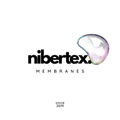Interviews
News Flash
NY futures trade in volatile fashion this week
23 Oct '10
5 min read
NY futures traded in volatile fashion this week, with December giving up 316 points (based on last week's synthetic value) to close at 115.71 cents, while March dropped 444 points to close at 110.31 cents.
We believe that the market's yo-yo performance this week is a reflection of the tug-of-war that is currently going on between speculators and the trade. After last Friday's powerful key reversal we saw speculators take profits by selling into strength. This is evident from the most recent ICE spec/hedge report, which shows that spec longs were down by 8'800 contracts as of last Friday.
While spec selling has been pushing values lower on several occasions this week, the trade has been readily buying these dips, because the cash market seems to be unfazed by what's happening in New York and has been holding strong. We previously mentioned the importance of the spread between the A-index and NY spot futures, which historically has been at around 5-7 cents, with occasional spikes towards 10 cents. When spec selling pushed December below 110 cents this week and the A-index refused to give up a lot of ground, the spread was allowed to widen to as much as 17-18 cents, which was an invitation for the trade to step in and buy the board.
The A-index has risen from 125.00 cents on Monday to 131.20 cents this morning, which means that the A-index/spot futures spread is still at a relatively wide 1549 points compared to the historic norm. As long as the cash market keeps paying the prices we are currently seeing, it will be difficult for NY futures to sell off. Mills in the Far East are still willing to pay 132 cents for nearby high grades and around 129-130 cents for February/March shipment.
This means that if someone were to buy the December futures contract, take delivery of it and then ship it to the Far East, it would yield a small profit based on current prices. It takes around 13-14 cents for quality premium, transportation, commission and some carry to get certified cotton to a landed C+F Far East price, which close of December would calculate at around 129-130 cents.
In reality though, any certified cotton bought on the December contract would probably not make it on the vessel before February; for the March contract it would take until May and so on. In other words, we need to compare December futures to a cash price for February/March shipment, based on which December was more or less at 'break even'.
We still believe that the cash market is holding the key to prices and that the futures market has no other choice but to follow it. We therefore need to focus on what cash prices are likely going to do over the coming months. Some traders fear that demand destruction will be severe enough to force prices lower in six to nine months from now and this may explain why July futures are valued at ten cents below December. Although there is no doubt that these high prices will take some toll on mill demand, we need to be careful not to conclude that this will automatically translate into lower prices.
We believe that the market's yo-yo performance this week is a reflection of the tug-of-war that is currently going on between speculators and the trade. After last Friday's powerful key reversal we saw speculators take profits by selling into strength. This is evident from the most recent ICE spec/hedge report, which shows that spec longs were down by 8'800 contracts as of last Friday.
While spec selling has been pushing values lower on several occasions this week, the trade has been readily buying these dips, because the cash market seems to be unfazed by what's happening in New York and has been holding strong. We previously mentioned the importance of the spread between the A-index and NY spot futures, which historically has been at around 5-7 cents, with occasional spikes towards 10 cents. When spec selling pushed December below 110 cents this week and the A-index refused to give up a lot of ground, the spread was allowed to widen to as much as 17-18 cents, which was an invitation for the trade to step in and buy the board.
The A-index has risen from 125.00 cents on Monday to 131.20 cents this morning, which means that the A-index/spot futures spread is still at a relatively wide 1549 points compared to the historic norm. As long as the cash market keeps paying the prices we are currently seeing, it will be difficult for NY futures to sell off. Mills in the Far East are still willing to pay 132 cents for nearby high grades and around 129-130 cents for February/March shipment.
This means that if someone were to buy the December futures contract, take delivery of it and then ship it to the Far East, it would yield a small profit based on current prices. It takes around 13-14 cents for quality premium, transportation, commission and some carry to get certified cotton to a landed C+F Far East price, which close of December would calculate at around 129-130 cents.
In reality though, any certified cotton bought on the December contract would probably not make it on the vessel before February; for the March contract it would take until May and so on. In other words, we need to compare December futures to a cash price for February/March shipment, based on which December was more or less at 'break even'.
We still believe that the cash market is holding the key to prices and that the futures market has no other choice but to follow it. We therefore need to focus on what cash prices are likely going to do over the coming months. Some traders fear that demand destruction will be severe enough to force prices lower in six to nine months from now and this may explain why July futures are valued at ten cents below December. Although there is no doubt that these high prices will take some toll on mill demand, we need to be careful not to conclude that this will automatically translate into lower prices.
Popular News
Leave your Comments
Editor’s Pick
Yohan Lawrence
Joint Apparel Association Forum (JAAFSL)
Navin Sharma
Yash Textile Machines Private Limited
































-Ltd..jpg?tr=w-120,h-60,c-at_max,cm-pad_resize,bg-ffffff)





.jpg?tr=w-120,h-60,c-at_max,cm-pad_resize,bg-ffffff)
.jpg?tr=w-120,h-60,c-at_max,cm-pad_resize,bg-ffffff)






